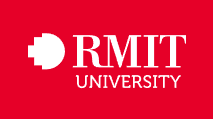A Study on the Integration of Chinese Excellent Traditional Culture into Senior English Teaching
DOI:
https://doi.org/10.63313/SSH.9032Keywords:
Chinese culture aphasia, English teaching in senior high school, Chinese Excellent CultureAbstract
High school English teaching serves as a crucial stage in nurturing students’ linguistic skills and intercultural communication abilities, and its importance cannot be overstated. Therefore, it is of far-reaching significance to strengthen the integration of culture, especially the penetration of Chi-nese excellent traditional culture in high school English teaching. However, the current English teaching at the high school level still leaves much to be desired in terms of emphasizing culture. This study aims to explore effective ways of incorporating China’s excellent traditional culture into high school English teaching, analyzing in depth the current situation of culture teaching in high school English teaching as well as specific and feasible strategies. It is hoped that this study will draw the attention and initiative of English teachers and provide guidance for them in implementing the inte-gration of traditional culture into subject teaching.
References
[1] Edward B. Taylor. (1871) Primitive Culture. London: John Murray.
[2] Chastain, K. (1976). Developing Second Language Skills: Theory to Practice [M]. Virginia: University of Virginia Press.
[3] Goodenough, W. H. (1957) Culture Anthropology and Linguistic. Washington D.C
Georgetown University Press.
[4] Hu, W. Z. (1991). Culture and Communication [M]. Beijing: Foreign Language Teaching and Research Press.
[5] Niu, X. S. (2002). Cultural teaching in foreign language instruction [J]. Journal of Ningbo University (Educational Science Edition), (6), 80-83.
[6] Zhang, D. N. (1996, May 4). The development and transformation of traditional culture [N]. Guangming Daily.
[7] Zhang, Q. Z. (2001). Chinese Traditional Culture [M]. Beijing: Higher Education Press.
[8] Li, Z. G. (2013). On the connotation of China’s excellent traditional culture [J]. Academic Research, (11), 37-39.
[9] Zhang, S. (2024). A study on the teaching practice of improving college students’ ability to "tell Chinese stories well in English" [J]. Journal of Liaoning University of Technology (Social Science Edition), 26(03), 128-131.
[10] Shi, X. R. (2023). Research on countermeasures for the "aphasia" of Chinese culture among English-major college students [J]. Comparative Study of Cultural Innovation, 7(31), 152-156.
[11] Dai, W. D., & He, Z. X. (2010). A New Concise Course in English Linguistics [M]. Shanghai: Shanghai Foreign Language Education Press.
[12] Wang, Y., Li, C. R., & Wang, Q. Q. (2023). An investigation into the current situation of Chi-nese cultural aphasia among English-major students: A case study of the Yangtze River Delta region [J]. Overseas English, (13), 120-122+125.
[13] Gao, Y. H. (1994). An investigation into productive bilingualism [J]. Foreign Language Teaching and Research, (4), 29.
[14] Cong, C. (2000, October 19). "Chinese cultural aphasia": A defect in English teaching in China [N]. Guangming Daily.
[15] Deng, Y. (2016). "Aphasia" of Chinese native culture and English education: Introducing Chinese native culture into English teaching [J]. Journal of the Chinese Society of Educa-tion (S1), 10-12.
[16] Yang, S. S. (2022). On countermeasures for the phenomenon of Chinese cultural aphasia in college public English teaching [J]. Journal of Liaoning Teachers College (Social Science Edition), (01), 52-54.
[17] Zhao, X. Z. (1989). On cultural differences and cultural introduction [J]. Language Teaching and Research, (1), 23-24.
[18] Ou, A. P. (2024). Research on the paths and methods of deep integration of Chinese tradi-tional culture into undergraduate teaching of foreign language majors [J]. Comparative Study of Cultural Innovation, 8(18), 121-125.
[19] Cheng, N. (2022). Multicultural input in postgraduate public foreign language teaching: A case study of English listening and speaking courses for non-English major postgraduates [J]. Textile and Apparel Education, 37(04), 347-349+354.
[20] Jin, C. J., & Wang, M. Z. (2022). A brief discussion on the input of Chinese culture in college Korean language teaching [J]. Korean Language Teaching and Research, (02), 48-53.
[21] Krashen, S.D.(1985)The Input Hypothesis: Issues and Implications. London:Longman: 103-107
[22] Ren, Y. (2019). Research on the input of Chinese traditional culture in college Chi-nese-English translation classroom teaching [J]. Journal of Hubei Open Vocational College, 32(5), 163-164.
[23] Nie, Q. L. (2024). The logical path and practical strategies of college libraries in cultivating college students’ cultural confidence [J]. Beijing Education (Higher Education Edition), (08), 79-80.
Downloads
Published
Issue
Section
License
Copyright (c) 2025 by author(s) and Erytis Publishing Limited.

This work is licensed under a Creative Commons Attribution 4.0 International License.

















